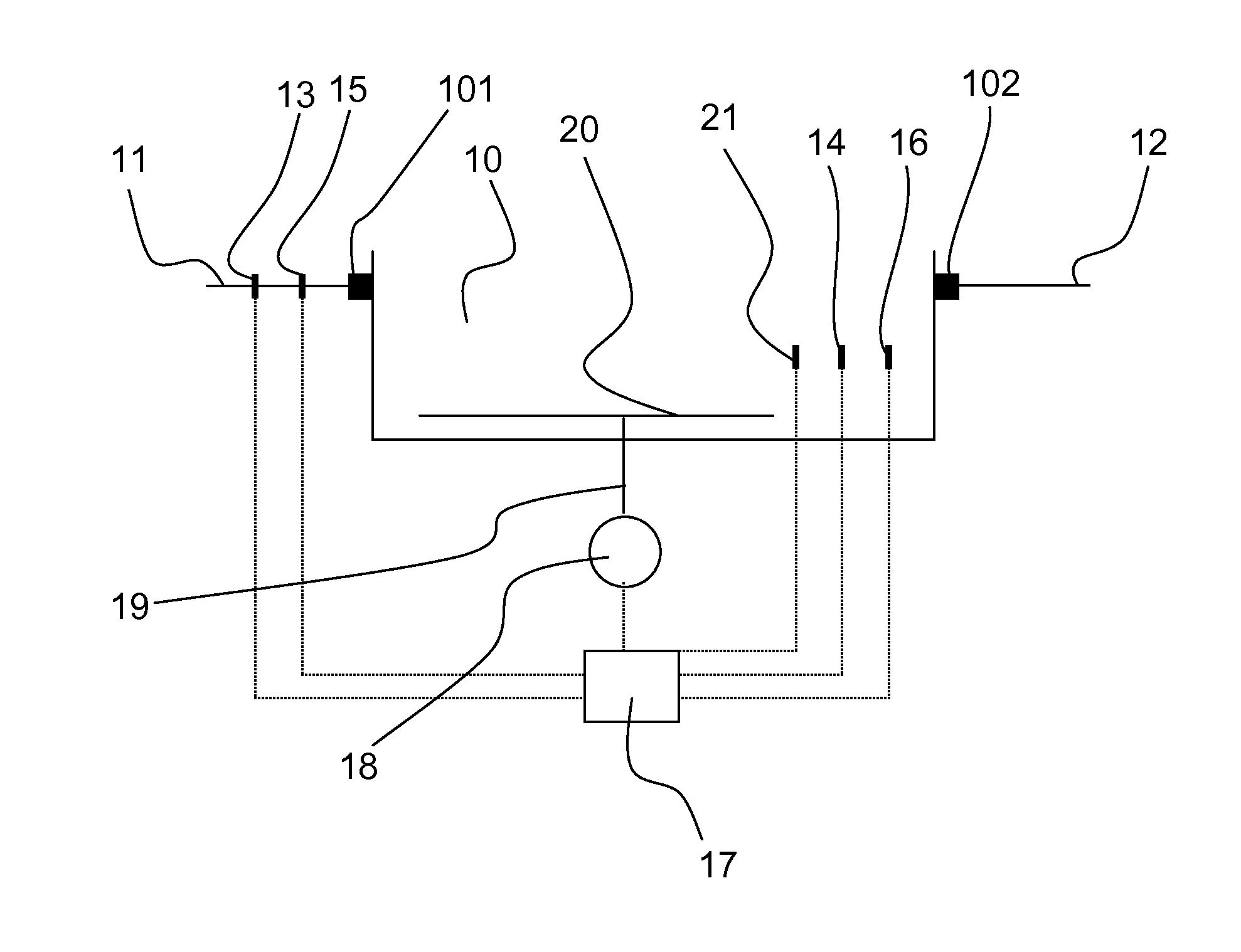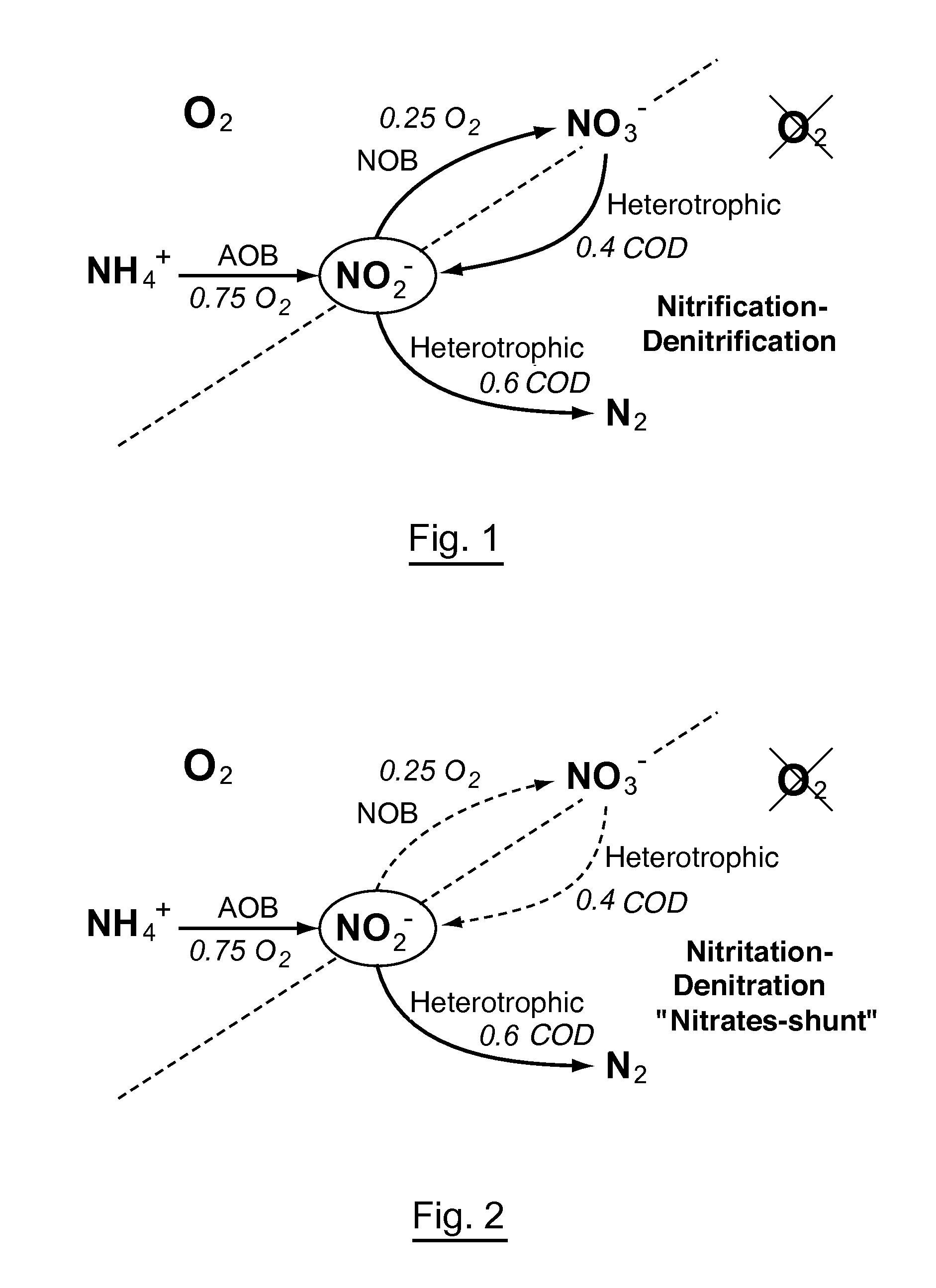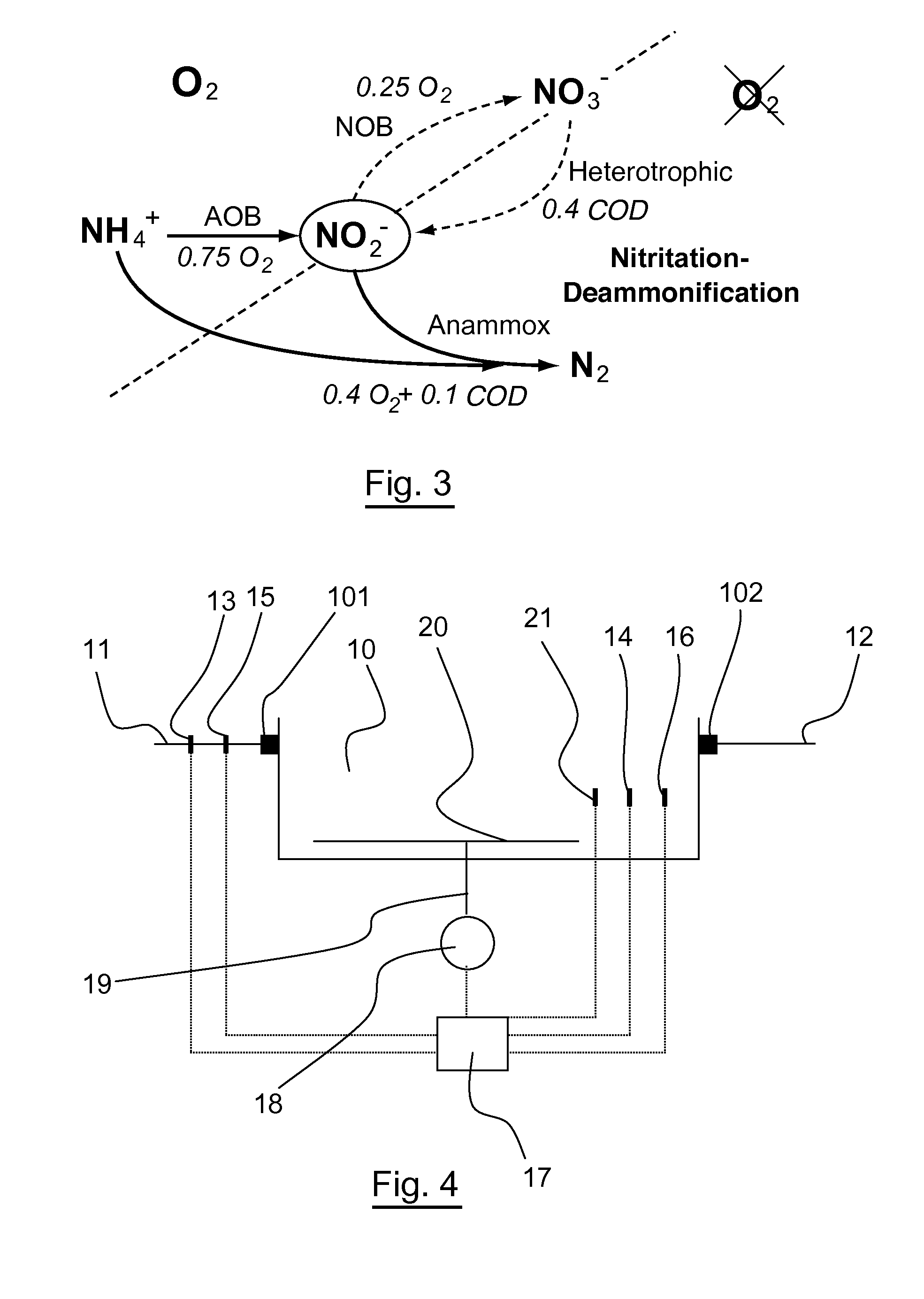Process for Treating Water by Nitritation-Denitration Comprising at Least One Aerated Step and One Step for Controlling the Oxygen Input During the Aerated STep
a technology of nitrate and denitration, which is applied in the direction of biological water/sewage treatment, ion exchangers, sustainable biological treatment, etc., can solve the problems of insufficient quantity of dissolved oxygen in the reactor, insufficient aeration of the reactor, and varying ammonium concentration of water to be treated as well as biological activity, etc., to achieve adequate ammonium reduction, reduce the production of nitrates, and ensure process efficiency
- Summary
- Abstract
- Description
- Claims
- Application Information
AI Technical Summary
Benefits of technology
Problems solved by technology
Method used
Image
Examples
Embodiment Construction
[0102]7.1. Reminder of the Principle of the Invention
[0103]The general principle of the invention relies on regulating the oxygen input within a biological reactor in which there is implemented a process of water treatment comprising at least one aerated step based on the percentage of ammonium reduced in the reactor on the one hand and on the ratio between the quantity of nitrates formed in the reactor and the quantity of ammonium reduced in the reactor on the other hand.
[0104]By taking account of the ratio between the quantity of nitrates formed in the reactor and the quantity of ammonium reduced in the reactor in combination with the percentage of ammonium reduced in the reactor, it is possible, according to the invention, to dynamically adapt the quantity of oxygen injected into the reactor to requirements so as to limit the production of nitrates while maintaining adequate ammonium reduction to ensure the efficiency of the process.
[0105]7.2 Examples of Embodiments of Water Trea...
PUM
| Property | Measurement | Unit |
|---|---|---|
| temperature | aaaaa | aaaaa |
| temperature | aaaaa | aaaaa |
| frequency | aaaaa | aaaaa |
Abstract
Description
Claims
Application Information
 Login to View More
Login to View More - R&D
- Intellectual Property
- Life Sciences
- Materials
- Tech Scout
- Unparalleled Data Quality
- Higher Quality Content
- 60% Fewer Hallucinations
Browse by: Latest US Patents, China's latest patents, Technical Efficacy Thesaurus, Application Domain, Technology Topic, Popular Technical Reports.
© 2025 PatSnap. All rights reserved.Legal|Privacy policy|Modern Slavery Act Transparency Statement|Sitemap|About US| Contact US: help@patsnap.com



